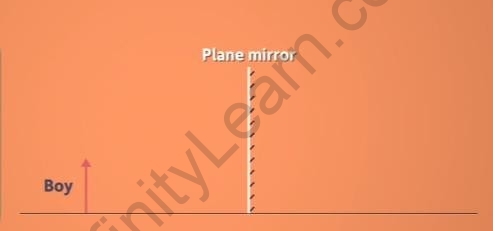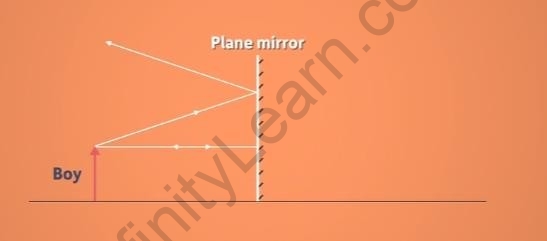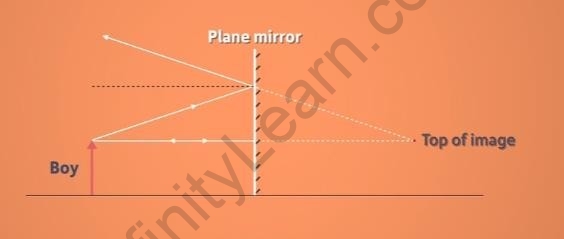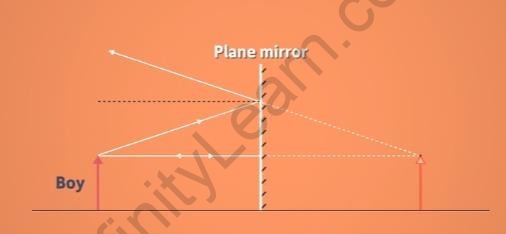Table of Contents
Table of Contents
- Mirrors
- How can we see images?
- Virtual image
- Real image
- Summary
- What’s Next?
In the previous segment, we learnt about an Experiment to verify the laws of reflection of light. In this segment, let us understand real and virtual images.
What are mirrors?
Mirrors are reflective surfaces. Plane mirrors and spherical mirrors are some examples of mirrors.
- Plane mirror: A plane mirror has a smooth and plane reflective surface.
- Spherical mirror: A spherical mirror is a mirror that is curved inwards or outwards.
How can we see images?
-
- When light is incident on an object, it is reflected.
- This reflected light is then incident on a mirror which reflects it again.
- When this reflected light reaches our eyes, we can see images.
- Thus, images are visible due to multiple reflections of light.
What is a Virtual image?
-
- An image that appears to be formed in a position somewhere behind the mirror is known as a virtual image.
- Let a boy standing in front of a plane mirror be represented as follows:

Representation of a boy in front of a plane mirror
-
- The arrowhead represents the head of the boy.
- All the light that falls on the boy will be reflected as shown below. These reflected rays will follow the laws of reflection.

Reflection of the light from the mirror
-
- After reflection, the rays of light will diverge. To form an image, trace them back to the point where they meet.

Tracing back the reflected rays
-
- This is where the image appears to be formed.

Image of a boy in front of a plane mirror
-
- But in reality, almost no light passes through the mirror and almost the entire light is reflected.
- Virtual images are formed when the rays of light diverge after reflection. Every plane mirror forms a virtual image.
- In the case of a virtual image, light rays appear to be diverging from the image behind the mirror.








